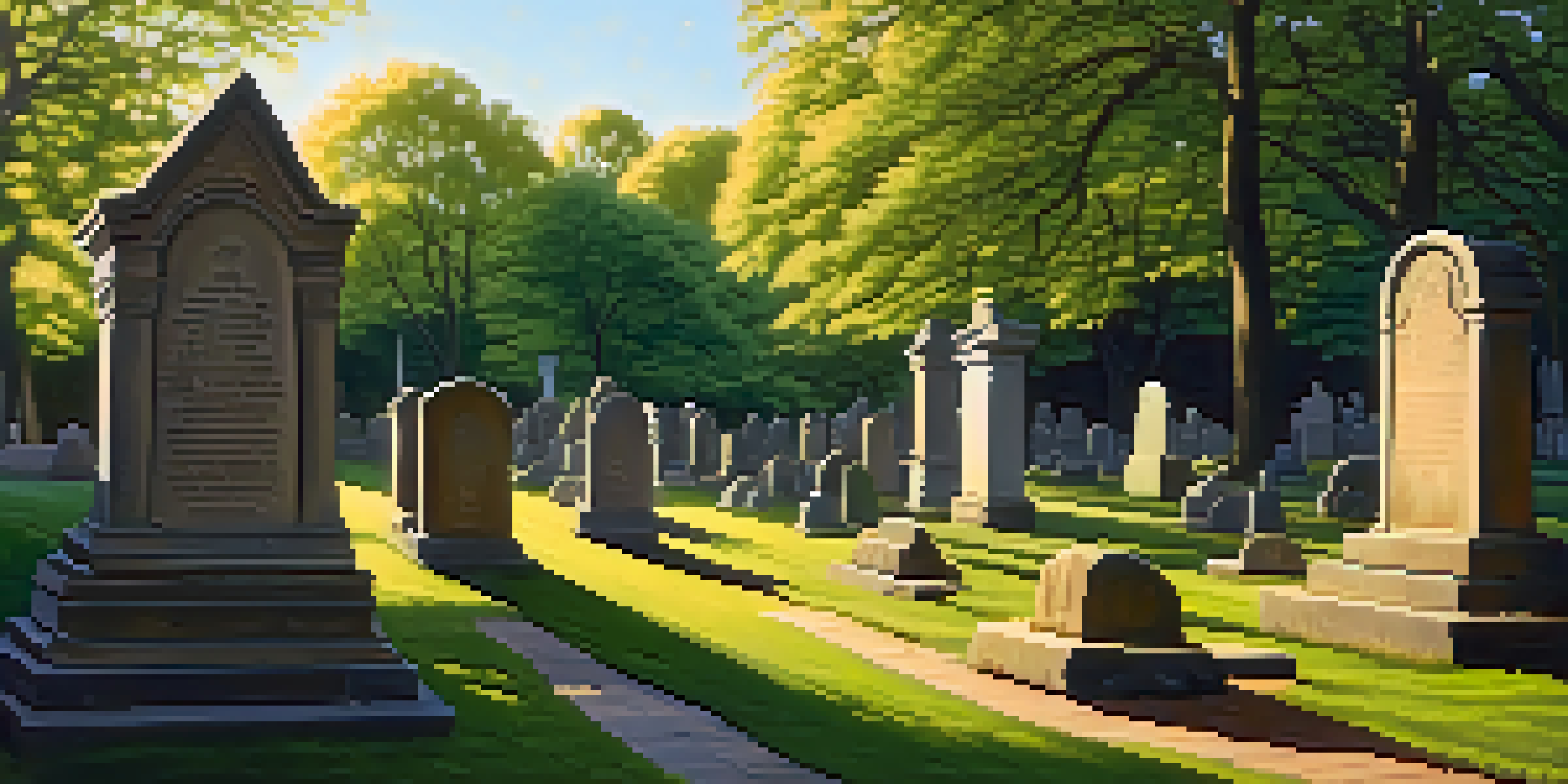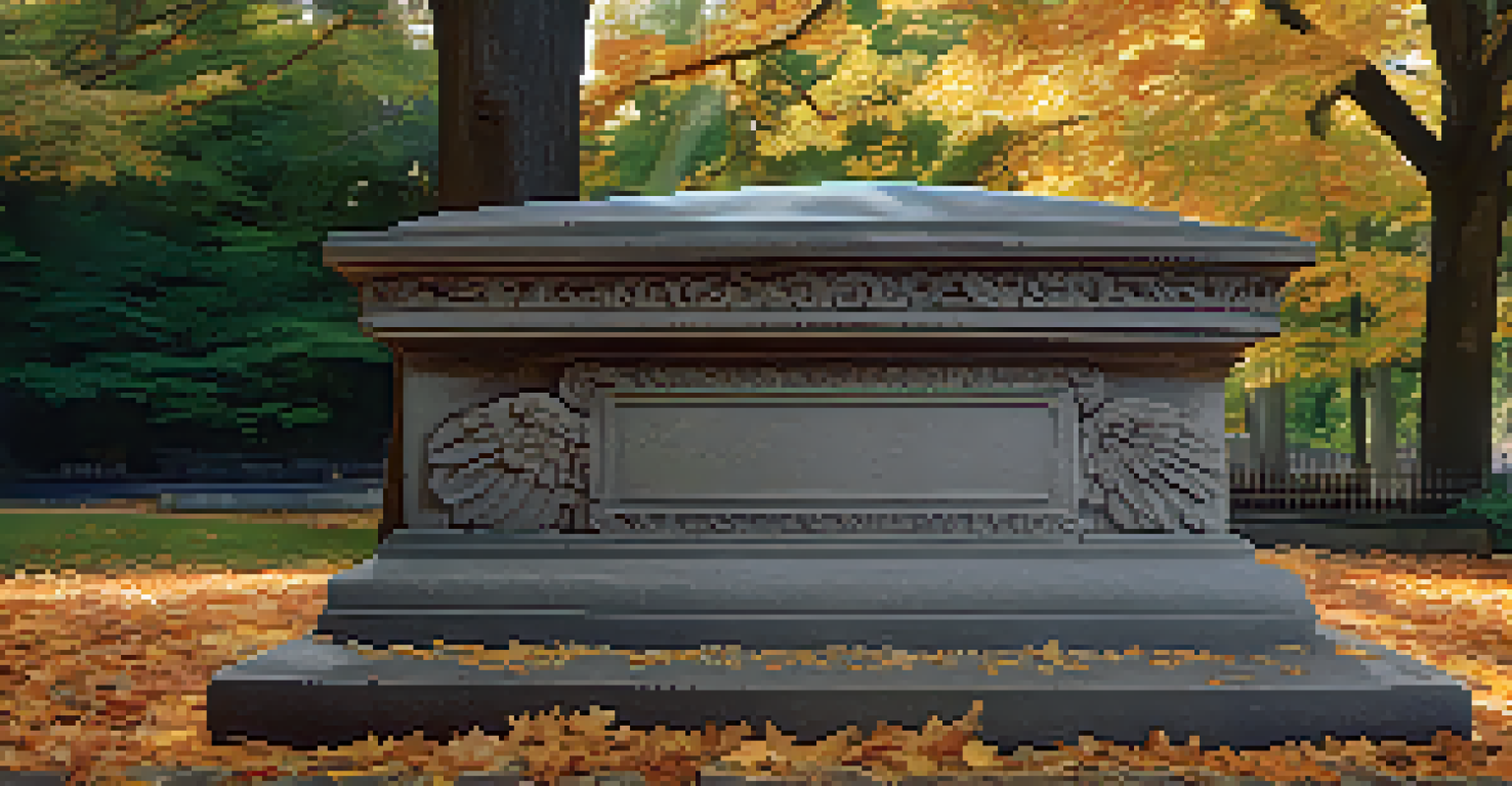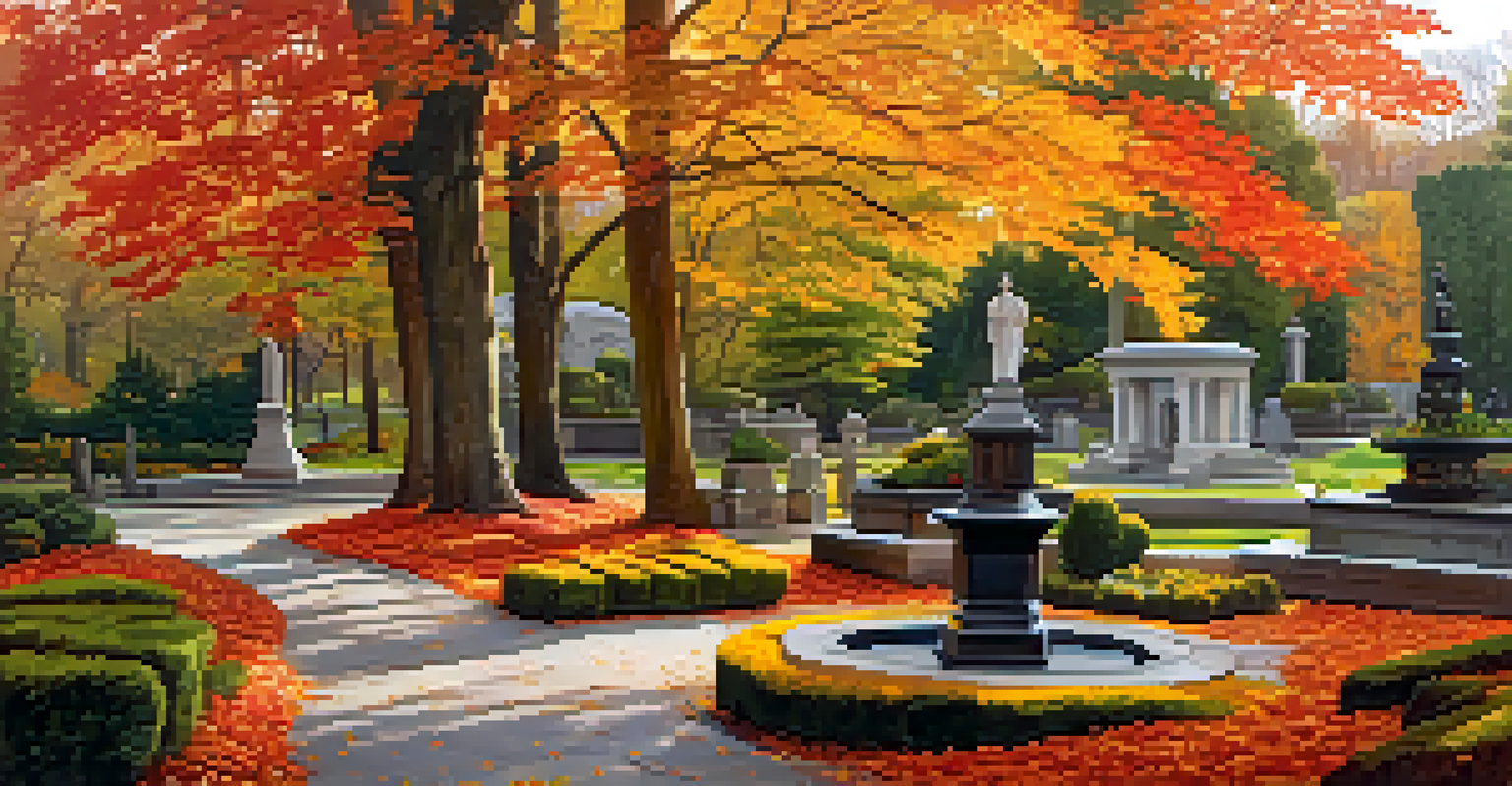The Significance of Boston's Historic Cemeteries Revealed

A Glimpse into Boston's Rich Historical Landscape
Boston's historic cemeteries are more than just burial grounds; they serve as a window into the city's past. Established in the 17th and 18th centuries, these sites are home to the final resting places of many influential figures who shaped American history. Walking through these cemeteries is like strolling through a living museum, where each gravestone tells a story.
The past is never dead. It's not even past.
For instance, the Granary Burying Ground houses the graves of notable figures like Paul Revere and John Hancock. This connection to the American Revolution and early governance adds layers of significance to the landscape. Each cemetery invites visitors to pause and reflect on the lives that contributed to the rich tapestry of Boston's history.
Moreover, these sites foster a unique sense of place, reminding us of our shared heritage. They encourage both locals and tourists to engage with history in a tangible way, making it easier to appreciate where we come from.
Architectural Beauty: More Than Just Headstones
The architectural design of Boston's cemeteries is a true testament to the craftsmanship of bygone eras. From ornate gravestones to grand mausoleums, these structures showcase a range of styles, reflecting the artistic movements of their respective periods. This diversity of designs not only enhances the visual appeal but also tells stories of cultural evolution.

For example, the King's Chapel Burying Ground features striking examples of colonial gravestone art, while the Mount Auburn Cemetery is known for its picturesque landscape architecture. The incorporation of nature, pathways, and sculptures transforms these cemeteries into serene parks that invite visitors to explore and reflect. It's as if each stone and statue speaks to the artistry of life and death.
Historical Significance of Cemeteries
Boston's historic cemeteries serve as vital links to the city’s past, housing the graves of influential figures who shaped American history.
As you meander through these spaces, you can't help but appreciate the intent behind each design. The careful placement of headstones and the use of natural materials create an atmosphere that honors the deceased while inviting contemplation.
Cultural Significance: Reflecting Boston's Diversity
Boston's historic cemeteries are a testament to the city's diverse cultural landscape. They serve as a final resting place for people from various backgrounds, including immigrants who contributed to the fabric of the community. Understanding this diversity is crucial to grasping the full significance of these sites.
History is not a burden on the memory but an illumination of the soul.
For instance, the Jewish Cemetery in Roxbury highlights the contributions of Jewish immigrants to Boston's history, while the Old North Church Burying Ground showcases the burial sites of early Puritans. Each cemetery reflects the unique stories and traditions that shaped the city, making them vital to understanding Boston's multicultural identity.
By exploring these cemeteries, visitors can gain insight into the values and beliefs of different groups. This exploration fosters a deeper appreciation for the cultural richness that defines Boston, reminding us that history is not one-dimensional but a mosaic of experiences.
Educational Opportunities: Learning from the Past
Boston's cemeteries are not only places of remembrance but also valuable educational resources. Many organizations offer guided tours, workshops, and lectures that delve into the historical significance of these sites. This educational aspect invites people of all ages to engage with history in a meaningful way.
For example, the Mount Auburn Cemetery offers programs that highlight the importance of conservation and landscape design, tying in environmental education with historical context. These experiences encourage visitors to think critically about the past and its implications for the future. As a result, cemeteries become more than just resting places; they evolve into classrooms.
Cultural Diversity Reflected
These cemeteries represent Boston's multicultural identity, showcasing the contributions of various immigrant groups throughout history.
By participating in these educational initiatives, people can foster a sense of stewardship over local history. This connection not only enriches individual knowledge but also cultivates a community that values and preserves its heritage.
Preservation Efforts: Keeping History Alive
Preserving Boston's historic cemeteries is crucial for maintaining the city's cultural heritage. Various organizations and volunteers work tirelessly to restore and maintain these sites, ensuring that future generations can appreciate their historical significance. These efforts highlight the importance of safeguarding our past.
For instance, the Friends of Mount Auburn Cemetery is dedicated to the preservation of this landmark, offering volunteer opportunities and fundraising events. Their commitment to maintaining the landscape and restoring gravestones ensures that the stories of those buried there continue to be told. It's a beautiful reminder of how community effort can sustain history.
Moreover, preservation initiatives foster a sense of pride within the community. By participating in these efforts, locals not only contribute to historical conservation but also engage in a shared mission to honor their ancestors and their legacies.
Spiritual and Emotional Connections: Finding Peace
Many people visit Boston's historic cemeteries seeking a sense of peace and connection. These serene spaces offer a respite from the hustle and bustle of city life, allowing visitors to reflect on their own lives and the passage of time. The tranquil atmosphere encourages contemplation, making these sites sacred in their own right.
For many, cemeteries serve as places to remember loved ones and connect with their own family histories. The act of visiting a grave can be profoundly emotional, creating a bond between the living and the dead. This spiritual aspect adds depth to the experience of exploring these historic grounds.
Economic Impact of Tourism
The cemeteries not only enrich the local cultural landscape but also contribute to the economy by attracting tourists and supporting nearby businesses.
In this way, Boston's cemeteries become more than just a collection of tombstones; they transform into spaces for personal reflection and remembrance. This emotional connection enriches the visitor experience, reminding us of our shared humanity and the universal journey of life and death.
Tourism and Economic Impact: A Hidden Gem
Boston's historic cemeteries also contribute to the local economy through tourism. As visitors flock to these sites to learn about history and engage with the past, they support local businesses and cultural institutions. This economic impact underscores the importance of preserving these sites for future generations.
For example, guided tours of cemeteries often lead visitors to nearby restaurants, shops, and museums, creating a ripple effect that benefits the entire community. This interconnectedness highlights how cultural heritage can drive economic growth and foster community engagement.

Furthermore, by promoting these cemeteries as tourist attractions, Boston can enhance its reputation as a city rich in history. This not only brings in revenue but also encourages a broader appreciation for the cultural significance of these sites, making them a vital part of the city's identity.